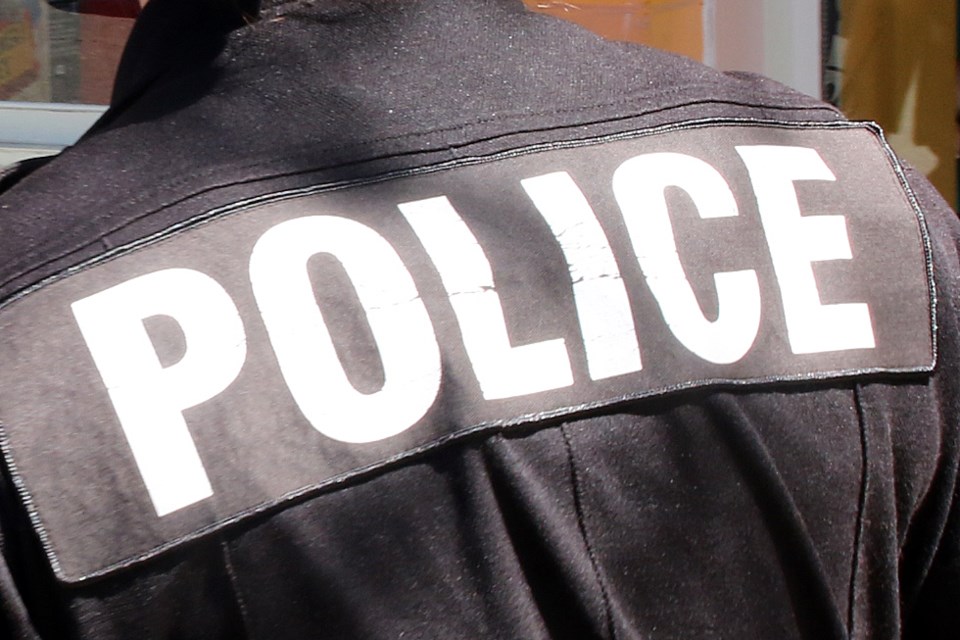THUNDER BAY - The Thunder Bay Police Service was kept busy in 2018, responding to 51,411 calls for service over the course of the year. While only a small fraction of those calls were criminal in nature, violent crime related to guns and gangs continues to trend upwards.
The 2018 Annual Report was presented to the Thunder Bay Police Services Board on Tuesday and the data reported to Statistics Canada continue to show an increase in the number of calls for service and the severity of crime in the city.
According to the Annual Report, the number of calls for service has been climbing steadily since 2016. However, of the 51,411 calls, only 17 per cent are related to criminal code offences.
“It gives you an idea of how busy we are but how busy we are with non-criminal matters,” said Thunder Bay Police Service director of communications, Chris Adams.
In 2018, police responded to 1,690 calls for service related to mental health, up from 1,548 in 2017 and 1,288 in 2016. In 2014, the number of mental health calls was reported to be 1,055.
Thunder Bay Police Service chief, Sylvie Hauth, said there needs to be ways to take this workload off the police service, which can be done by continuing to work collaboratively with other agencies and organizations.
“We’ve seen some very good programs,” she said. “The Joint Mobile Crisis Response Team is one of them. You will see once we do our next annual report how many calls for service are not necessarily deferred from police, but that we can disengage at a much earlier point in the interaction.”
“So where before a call could be three or four hours for us sitting at emergency, sometimes usually within 30 minutes we can be clearing from the call and the crisis team takes over.”
But Hauth added that there is a lack of services available in the city for people dealing with mental health and addiction issues and while the Crime Prevention Council and Drug Strategy are looking at ways to help people in these situations, police alone are not the solution.
“Realistically at the end of the day, when we don’t have enough beds at detox, or we don’t have some place to bring somebody outside of the police station with a ticket in hand, it’s still just a band aid solution that doesn’t address the bigger picture.”
The number of intoxicated calls has decreased, however, with police responding to 2,615 in 2018 compared to 3,242 in 2017.
Police responded to 2,291 calls relating to family violence in 2018, as well as 628 break and enters, 260 reports of stolen vehicles, 2,173 thefts under $5,000, and 747 shoplifting incidents.
Violent crimes increasing
The Annual Report also highlighted that violent crimes are up in 2018. The crime severity index for 2018 was 96.25 compared to 89.18 in 2017. Thunder Bay remains much higher than the average in Ontario, which has a crime severity index of 59.96 in 2018 and 56.34 in 2017.
The violent crime severity index is also showing an increase, with the city listed at 167.6 in 2018, up from 147.91 in 2017. In the province, the violent crime severity index is listed as 73.44 in 2018 and 69.83 in 2017.
Thunder Bay Mayor, Bill Mauro, said the police service should use these numbers as evidence when advocating that the city needs more financial assistance from the provincial and federal government when combating crime.
“We all know we don’t have enough capacity for mental health and addictions capacity, but we are not getting anything,” he said. “Do we need a louder voice? The numbers are pretty stark.”
“We need to do something about this but we don’t feel like we’re getting there,” Mauro continued. “We just need to find a way to help and make the community feel better about ourselves and the officers feel more supported.”
“I agree with a louder voice,” Hauth said. “I think we need a bigger concerted effort. Guns and gangs fits 100 per cent into violent crime index.”
The Annual Report also highlighted that police service deals with a much higher number of missing person cases when compared to other cities across the province, including Toronto. In 2018 there were 843 missing person cases, 981 in 2017, and 1,051 in 2015.
“We have a lot of students coming in from neighbouring communities, so we have to ensure our policy reflects the needs and realities of our city,” Hauth said. “Everybody has the same standard of a policy. We do have some different variations in our policy that probably differ from Toronto.”
The Thunder Bay Police Service does have a higher clearance rate when compared to the province. According to the Annual Report, in 2018 the police service’s clearance rate was 44.98 and 48.71 in 2017.
In Ontario, the average clearance rate was 40.67 in 2018 and 42.55 in 2017. Nationally the numbers drop to 38.36 in 2018 and 39.88 in 2017.
